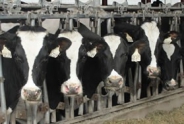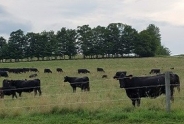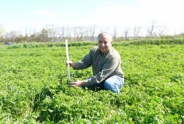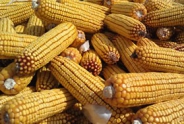Are you ready for tax season?
Nicole Tommell, Area Ag Business Management Specialist/Team Leader
Central New York Dairy and Field Crops
Basic Dates to be aware of
Depending on your business structure, income tax must be filed by either March 15 (C-Corporations/S-Corporations) or April 15 (most filers). Some farm accountants will file extensions, make sure you are aware if this is done. Give your accountant a call to gauge their schedule during this tax season. Farm business taxes are lengthy and will take time to prepare, allocate for that time especially if you believe a refund will be returned to you.
Gross Income
Did the farm barter this past year with another farm/landowner? Did you get a refund check from an animal pharmaceutical company for a purchase? Were there any rents, royalties or dividends paid to the farm? If so, remember to bring them to the attention to your accountant. Often times we might cash a check and forget that the funds are considered part of our gross income. All forms of income need to be identified and shown in the gross income portion of a tax statement. Make a copy, keep a ledger with details of the check, or if there was a stub, retain and submit to the tax professional with notations.
Is it a farm expense or a personal expense?
Although most farm expenses can be used as a deduction if properly allocated, there are some expenses that should be separated. Splitting out farm expenses and personal expenses can be aggravating and time consuming. Electricity, telephone, fuel oil, insurance, repairs, interest, taxes, etc., are all expenses that can be red flags during audits. Keeping track of usage percentages will assist your accountant in properly allocating on the farm Schedule F. If it becomes too cumbersome, work with your tax professional to find fair percentages that show personal expenditures. Do what feels comfortable.
Over the previous fiscal year, did the farm acquire a new piece of machinery? Did you have to make a large purchase directly related to your farm business? Was there a trade of older equipment? Documenting large purchases when they are made will help most farm families remember the happenings of the year. Including information such as date, price, make, model, potential trade in piece, description of equipment will assist the tax preparer in creating a depreciation schedule for the specific item. However, if a piece of equipment /machinery was sold outright, documenting that transaction is necessary.
Compiling all the paperwork
Finally after the dust settles and all expenses are allocated in the correct category, compiling the supporting documents is key for speed and accuracy of the tax preparer. Organized documents with notations become an accountant's friend. Becoming familiar with your specific documents if a question arises is also necessary. Below is a list of documents that should be in the farm tax folder.- Income/Expense Sheet
- Profit/Loss Statement
- All machinery/equipment purchase documentation
- New structure details
- All tax documents for fiscal year (property and school)
- All interest statements from banks, mortgage companies, machinery lenders
- Cash receipts (excel spreadsheet or ledger with correct expense allocation)
- Retirement /401K Statements
- Payroll deductions/ payroll allocation
- Annual credit card compiling statement (if one is received)
- Any USDA payment statements
- 1099s/ W-2 ‘s
- New loan information (personal loans, operating loans, remortgages, restructures)
- Sales of equipment for cash (bill of sales)
- Loan payoffs
Final Thoughts
With the close of 2018 and the difficulty we have all faced in agriculture, I realize that many farm folks may be behind with the accounting functions of their business. Unfortunately, accounting is the necessary evil in directing our farm businesses with sound decision making as we move forward. If you fell in the trap of putting data entry off until tomorrow, let's make a New Year resolution to continually log income and expenses throughout the new year, start a folder of important documents for the tax preparer and keep a log of large transactions that may impact depreciation. Just a little tweaking of a farm's basic accounting system can provide less stress for future tax seasons. If you are looking to transition to a new accounting system, the first quarter is always the best time to begin!
Upcoming Events
If I'm Not Here Tomorrow: Estate Planning for Young Farm Families with Children
November 5, 2025
Free webinar
Dairy Systems and Technology Showcase - Farm Tours
November 6, 2025 : Farm Tour - Creek Acres Farm
Amsterdam, NY
Free event, but registration required. Brand new freestall barn. All attendees must wear clean clothes and boots, and scrub and disinfect footwear upon arrival and before leaving.
November 6, 2025 : Farm Tour - Glenvue Dairy Farm
Fultonville, NY
Free event, but registration required. Under construction 10 robot farm. All attendees must wear clean clothes and boots, and scrub and disinfect footwear upon arrival and before leaving.
November 7, 2025 : Farm Tour - Indian Camp Farm & Dairy
Earlville, NY
Free event, but registration required. Four robot barn and new manure aeriation system. All attendees must wear clean clothes and boots, and scrub and disinfect footwear upon arrival and before leaving.
Seleccion y organizacion del personal (Staffing and Organizing Your Team, Taught in Spanish)
November 12, 2025
Course begins Wednesday, November 12. Live Zoom discussions: Tuesdays, Noon - 1PM EST beginning November 18 through December 23.
Announcements
Sign Up for Our Weekly E-Newsletter
We send out a bi-weekly e-newsletter that has announcements, upcoming programs, and opportunities for you! Registration is quick, easy, and free. Click here to sign up today!Farmers Can Join MeatSuite For Free!
MeatSuite.com is a free resource provided by Cornell University where NY meat farmers can create a farm profile and list their bulk (wholes, halves, quarters) and bundled (i.e. Grilling Bundle) meat products.Why should farmers join?
1. It's free and easy!
2. Connect with more local customers. In the past year the MeatSuite.com farm directory had 8,300 visits from New York consumers. Farm profiles get as many as 25 views per month from potential local customers. We also spotlight MeatSuite farms on social media and bring attention and purchases to farms through highlights and giveaways.
How do I join?
Farmers can visit https://www.meatsuite.com/farmers/ to create a free farm profile. You must list at least one product for your farm's profile to go live. You'll also have access to Cornell's free Meat Price Calculator, a helpful tool for pricing your meat to make a profit.
While you're on MeatSuite, check out the "Creating Consumer-Friendly Bulk Meats" publication on the log-in page. It has tips on how to create bulk meat products that are easier for first-time buyers to say "yes" to.
If you have any questions as you create your farm profile or products, we're here to help! Please email Matt LeRoux at mnl28@cornell.edu.




